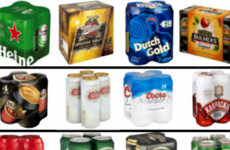
CONVENIENTLY for the 13,000 runners taking part in tomorrow’s Dublin Marathon – making tomorrow’s crowd the biggest there has ever been in the capital’s 31st race tomorrow – an American engineer claims to have figured out exactly how runners can avoid hitting the dreaded ‘Wall’.
Ben Rapoport, a soon-to-be-PhD in electrical engineering who also wants to be a brain surgeon, stumbled (not literally) across the problem five years ago when running the New York City Marathon himself, and vowed to figure out how it could be avoided.
“Somewhere in the Bronx, I started to feel like I couldn’t keep up the pace,” he told NPR. “It was awful. I couldn’t make my legs run any faster. And when I tried, it was very painful.”
And so he put his mind to figuring out where the problem comes from – and whether there was any way of manipulating the metabolism to avoid having the problem at all.
“When an athlete hits the wall, they’re essentially running out of carbohydrates in the leg muscles and in the liver,” Rapoport explains. “So when you bring the carbohydrate fuel tank to empty, the body is forced then to metabolise fat rather than carbohydrates.”
It’s because the body is far slower at breaking down fat than carbs – with the former requiring much more oxygen to burn, meaning that an athlete can’t devote as much attention to their speed – that someone running on empty might find themselves simply unable to muster up any more energy for a while.
Though it’s of course possible to simply stock up on as much carbs as possible before setting off, hoping not to run out of them before the 42km have been completed, Rapoport knew this was impractical for most – and set about figuring out how much it was possible to store on a body before ‘spare’ carbs were converted into the less efficient fat.
He has just published his findings in the Public Library of Science’s journal, Computational Biology. His research ultimately led him to define a relatively straightforward formula (pictured) that tells a person how many calories they’ll need to take on board before setting off based on their weight and ‘maximal oxygen intake’, which can be ascertained by measuring one’s pulse at rest and in action.
If you’re one of the 13,000 taking part in Dublin tomorrow, you can download Rapoport’s research as a PDF and work out the size of the carb load you’ll need to stave off the dreaded collapse. Otherwise, if you’re more content to set off on a wing and a prayer, we wish you the best of luck anyway.
(Oh, and if you’re planning on driving tomorrow, details of the route and the traffic restrictions can be found here.)









COMMENTS (1)